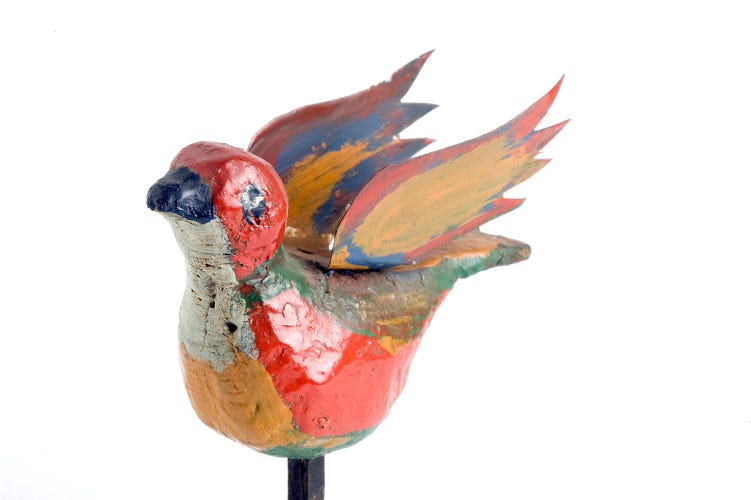
In Chapter 6 of “The Sword in the Stone” by T. H. White, young Arthur, known in this story as the Wart, is practicing and learning archery with Sir Ector’s son, Kay, and there is this passage:
“They left the targets and had several shots at the popinjay — which was a large, bright-coloured artificial bird stuck on the top of a stick, like a parrot — and Kay missed these also.”
Prior to reading this book, I’d heard of the word “popinjay” and known it only by its now-standard meaning of “a strutting supercilious person.” Even though I’m a linguist, it’s just one of those words that I hadn’t given much thought to because it’s also one of those words that I seldom see.
However, in “The Sword in the Stone,” the word comes up frequently, and it had come up before the passage I’d quoted above, also in relation to archery, so I’d looked it up to see what it meant. This is the definition I found: “archaic: the figure of a parrot usually fixed on a pole used as a target in archery.” It was later in the story that White essentially defined the word for his readers, and it was then, too, that I had another of those lovely “aha” moments that come with having sound cognate cognizance.
Once the word “parrot” appeared to me twice — first in the archaic definition I’d found to relate the word to archery and secondly in the passage from Chapter 6, I made that connection with a Spanish word for “parrot.
popinjay — I’ve already given its current definition above, but originally this word was the English word for “parrot.” That definition is now obsolete. However, it can still refer to the image of a parrot on heraldry.
papagayo — the Spanish cognate that means “parrot”
The more commonly used word for “parrot” in Spanish is “loro,” and that’s the word I taught for 30 years, but way back when I first learned Spanish, the word I originally learned for “parrot” was “papagayo.” I hadn’t seen that word very often at all, though, over my three decades of teaching Spanish, so the first encounter with the word “popinjay” in White’s story didn’t ring any mental, linguistic bells for me, but the second encounter with it did.
Parrots like to strut about, so over time, the word “popinjay” stopped referring to the bird itself and began referring to people who strutted about like one. Here’s more about that from merriam-webster.com:
Popinjays and parrots are birds of a feather. Popinjay, from the Middle French word papegai, is the original name for a parrot in English. The French word, in turn, came from the Arabic word for the bird, babghā’. Parrot, which English speakers adopted later, is probably a modification of the Middle French perroquet, which is also the source of the English parakeet. In the days of Middle English, parrots were rare and exotic, and it was quite a compliment to be called a popinjay after such a beautiful bird. But by the 1500s, parrots had become more commonplace, and their gaudy plumage and vulgar mimicry helped popinjay develop the pejorative sense we use today.
Other Romance languages use cognates of “popinjay” for their words for “parrot.” For example, the Italian word is “pappagallo.” Spanish has “papagayo” but tends to use “loro” for “parrot,” a word they adopted after conquering the Taíno people of the Caribbean where “parrots” are quite prolific.
Once, it was considered a compliment to be called a “popinjay,” but nowadays, if someone calls you that, you may want to check your attitude for unnecessary vanity and strutting about. Don’t become another type of target — the one for ridicule instead of arrows.
Until next time. This is November’s free post. If you’re not a paying subscriber, you missed another great word from T.H. White’s story last week — probity. To receive these posts weekly and to have access to the audio version as well as the full archive of more than 240 posts, upgrade to paying today. It’s only a handful of dollars every month. Thanks.
Tammy Marshall












